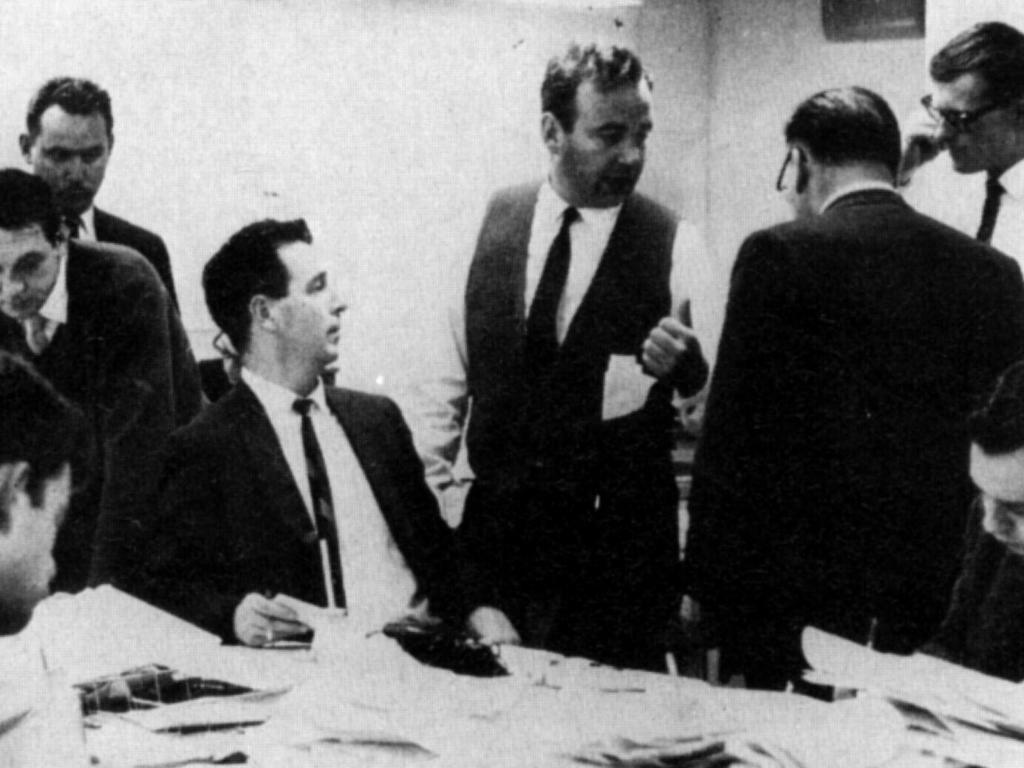The birth of The Australian
Rupert Murdoch set out in 1964 to start a national daily newspaper that could be read the same day across our ample continent. And he drew that first staff 60 years ago from all its corners.
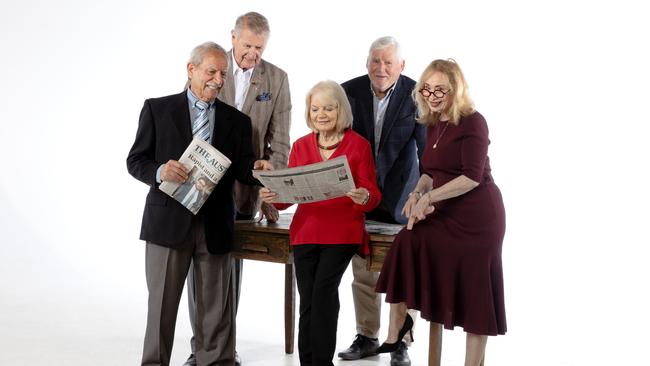
Rupert Murdoch’s plan in starting The Australian in 1964 was a national daily newspaper that could be read the same day in the capitals and towns across our ample continent. And he drew that first staff 60 years ago from all its corners.
As always with Murdoch, things were done in a hurry. They still are.
The unpredictably brilliant and noisy Maxwell Newton brought together the editorial team, while the proprietor oversaw the complex and daunting (and, in the early days, often weather dependent) circulation arrangements.
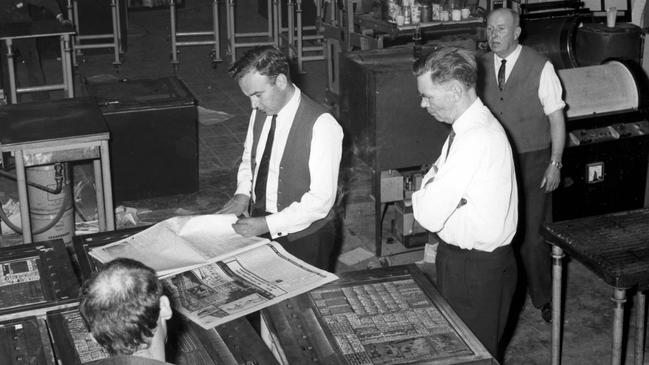
The printing and production staff was ready to go, largely made up of the Cowley brothers – Ken, John and Les. Murdoch had bought Ken Cowley’s small, but thriving twice-weekly newspaper The Territorial with a view to challenging the slumbering Canberra Times with a daily newspaper in the national capital.
As those proposals took shape, and unbothered by the shipwrecked plans of others the decade before, Murdoch decided to think big. His newspaper would be called The Australian and would serve and circulate not only in Canberra but across the nation.
Up for this mighty challenge was a group of mostly young workers who accidentally found themselves there, or were drawn to it by the excitement on offer.
Ken Cowley, who died in 2022, headed production in those first days. He would go on to be Murdoch’s right-hand man, running all News Corp’s Australian operations while the boss expanded the company into Britain, America and Asia. His younger brother John would head up the London operations when News International’s important Fleet Street titles were moved to Wapping, transforming the British newspaper industry.
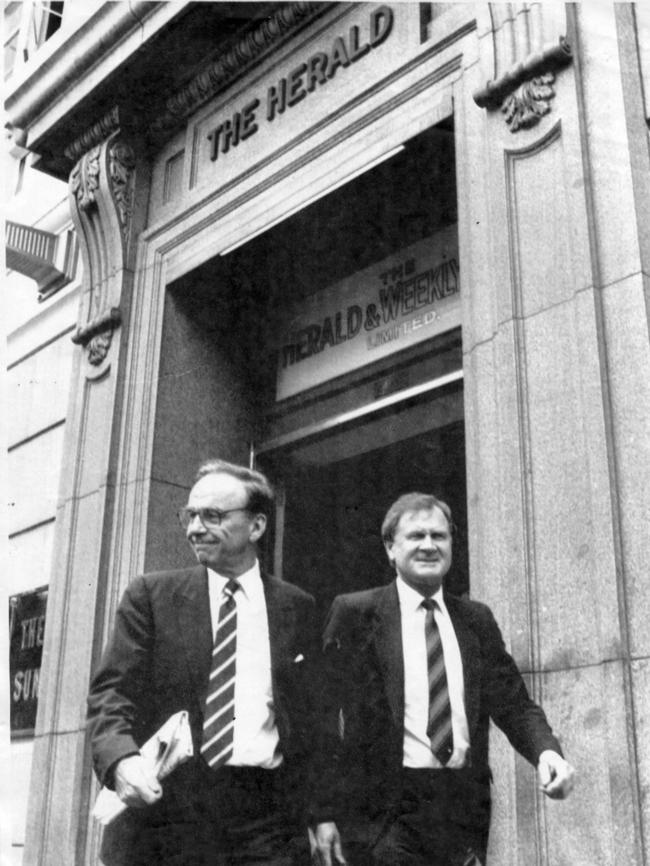

But in July 1964, John was wearing a traditional box-shaped, handmade printer’s hat and running in and out of the already 40-year-old ink-splattered presses that had been purchased to publish The Australian.
John had just finished trade school at which he learned the skills of printing and composing and was apprenticed to brother Les. He remembers Murdoch being a part of every aspect of the newspaper, from the morning conference to late nights in the small press hall. “Originally it (what soon became The Australian) wasn’t going to be a national newspaper and then things got out of hand!”
But, like every one of those originals on this newspaper in those early years, he was confident it would succeed – that they would succeed. “But, let’s be honest, it struggled for a few years.”
Sandra Hall was one of the first journalists appointed to The Australian and she remembers working first in offices at the new MLC centre in Canberra (breathlessly reported at the time to reach up 116ft – 35m!).
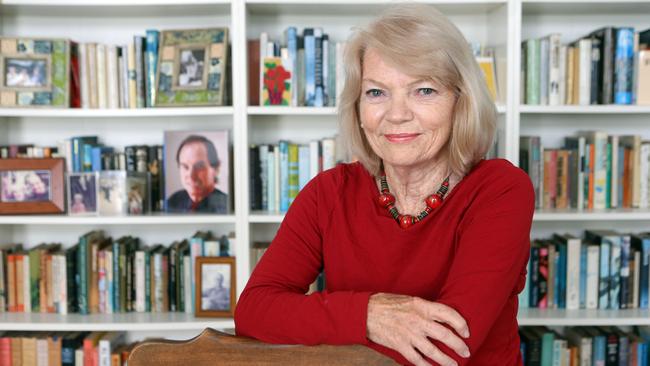
The quickly coalescing staff aboard for those first weeks moved into newly refurbished offices in Canberra’s Mort Street. “The building wasn’t finished and we walked across duckboards to get in,” remembered Hall. It was also cold; the heating system wasn’t operational.
“People started trickling in from all over the country. Max Newton would take them down to the men’s room to discuss their salaries and so on. But the privacy was negated by the fact that he used to leave the door open. So if you walked past the men’s room there would be Max with one leg up on the washbasin discussing their terms – and you know how loud his voice was.”
Newton found a house for Hall and a friend on the newspaper and drove them there in his car with their meagre belongings. He was a gruff, gentle giant. But after a few weeks when the newspaper was clearly struggling, he gathered all the young staff together and told them what he wanted and what was expected of them.
“He got rather stern with us and told us we weren’t performing at the level he wanted.” The temperature was rising. But Hall still had faith in the endeavour. “We were kind of idealistic about it all. And we had a lot of parties. Or the pub, you know, the days when they would stay open for us.”
Warren Beeby joined The Australian early on, poached from the finance desk of Sydney’s now closed The Sun. His career blossomed at News Limited, as it was then, and he became editor of The Australian and then worked in editorial management for the rest of his career. He too was confident of the newspaper’s future, but there was a moment in 1982 when endless industrial friction wore management down and tested Murdoch’s patience for a masthead that had yet to turn a profit.

At one point, brought up to date on the latest dire events on The Australian while in London working on integrating into the company the recently acquired The Times and The Sunday Times, Murdoch possibly thought the paper was draining too much management time and left its future in Ken Cowley’s hands – he could shut it down if it was all too much. “But Ken took it upon himself not to,” said Beeby. The journalists’ union was meeting across the road “for the third stop-work meeting of the day”. Ken told Beeby to instruct the strikers that if they weren’t “back in five minutes he was closing The Australian”. Beeby relayed the message. They returned to work. It was our nearest miss.
Tony Prowse would become circulation director of The Herald & Weekly Times, Australia’s largest publishing group that News took over in 1987, and a News Ltd director. He started as “a boy” – an editorial gofer – prior to The Australian launching. “I told Mum I wanted to leave school and I had seen an advertisement for ‘a boy’ – and I said ‘Mum, I qualify’,” recalled Prowse, who cycled in to the interview. Like many of the staff it was the first time he had witnessed the complexity of a daily newspaper. He was paid a few pounds a week (The Australian beat decimal currency by 18 months) and thought he was the richest kid in Canberra, even after paying his mum board.
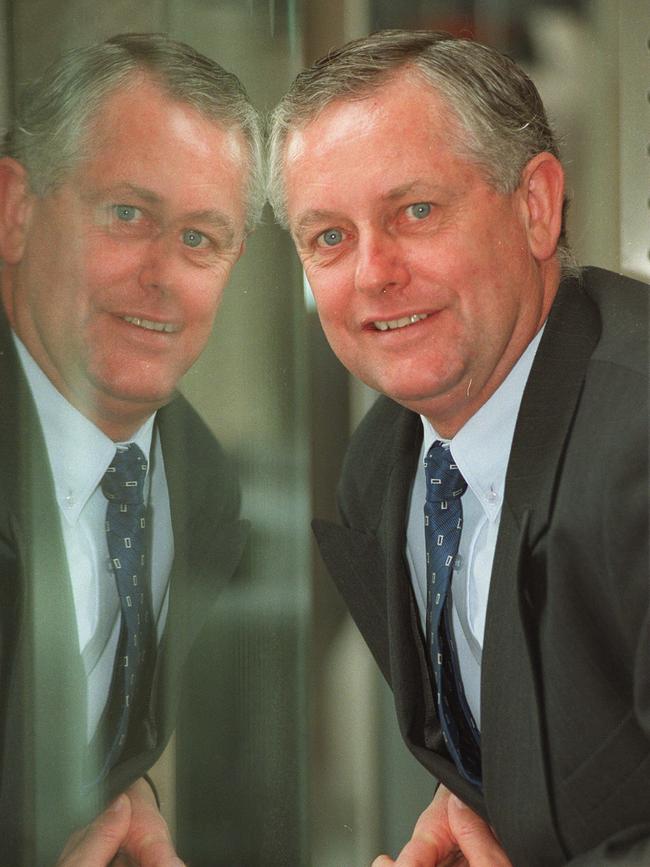
“There was a sense of the incredible,” he recalls. “We were going to build a paper in Canberra and fly metal plates (of the pages) to Melbourne and Sydney and distribute a paper … we thought Rupert Murdoch was magic.”
Also under the spell of this enchanted era was a young photographic student Yvette Grady who “was thrown in the deep end” and taught how to print photographs in a dark room where the fixing solution turned her fingernails black. As a photographer, she was sent out on “literally everything. I did murders. I did head-on collisions. I did portraits.”
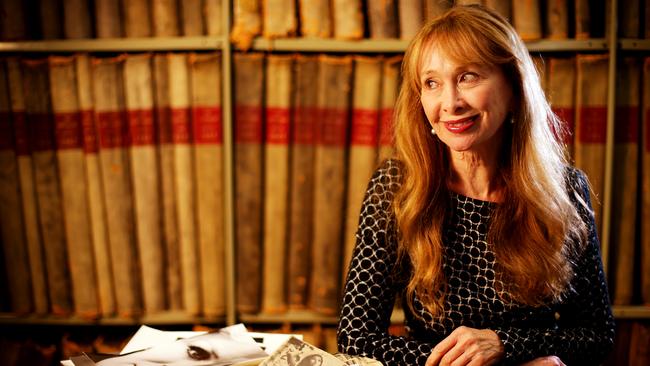
Grady also photographed the lighter side of life: “The funniest people I photographed were Spike Milligan (and) I also did Barry Humphries. They were wonderful people.”
George Calvi was recruited to The Australian’s production department while in his last year as an apprentice at Sydney’s School of Graphic Arts. These were skills known as hand and machine composition – long made redundant by computers.
But he remembers those days and their fog of printer ink.
“Those early days on The Australian were an incredible challenge of monumental proportions. Everything we did to produce The Australian was manual, from typesetting, to proofing, setting headlines, setting corrections, making up the pages, setting the advertisements, casting the printing plates; it was all manual, time consuming and labour intensive.”
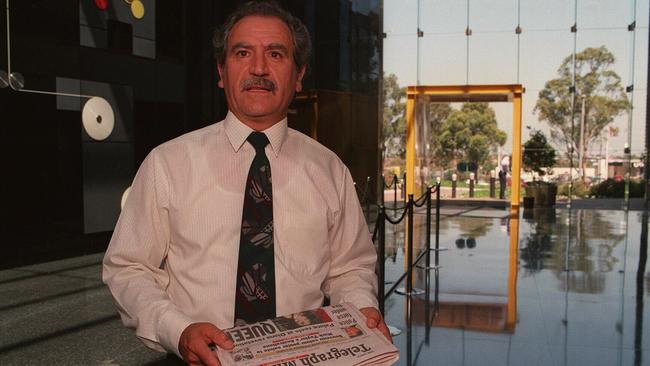
Calvi found it “incredibly satisfying, and a confirmation of our skills. It’s worth noting many of our company’s senior executives and managers came from that early Australian crew.”



